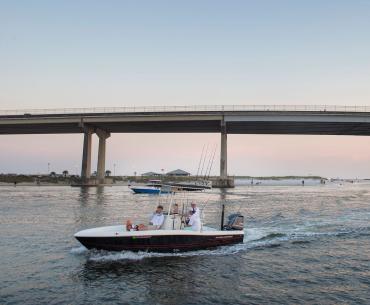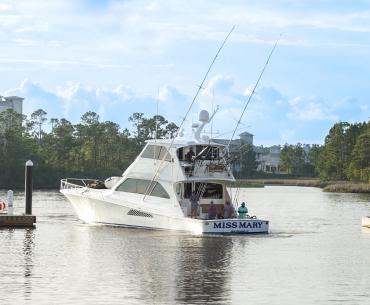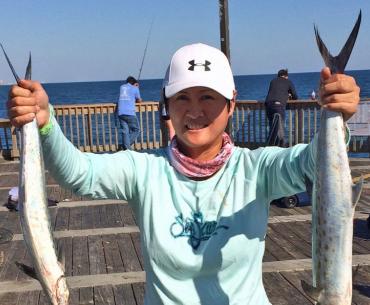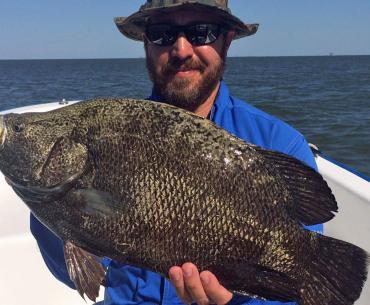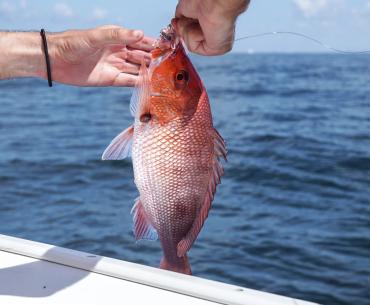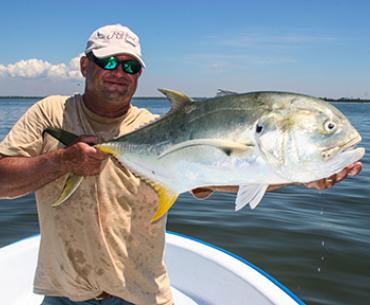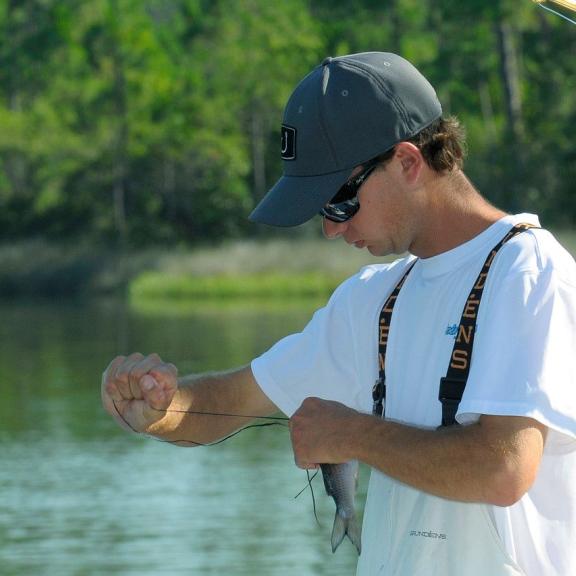
The definition of success in every fishing trip is catching a fish, of course. Sounds easy enough, right? Well, it can be if you do a little homework first.
Every angler knows that having the right rod, reel, line, hooks, etc., is meaningless if you don't have the right bait. It's the first thing needed to bring a line tight on a fish. So, how do we choose? Let us break down the decision process as to what bait to use and where to get it.
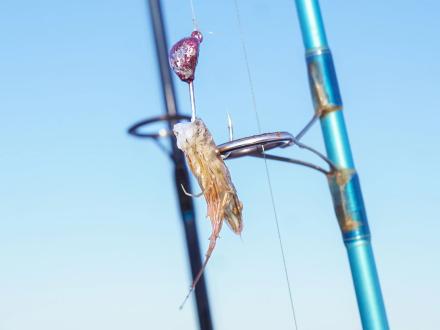
Live Bait Choices by Location
Every species has a preferred diet, which usually coincides with the forage offerings in each environment. Below, we will look at a few popular fishing locations on Alabama's Beaches and the most common baits to use in each.
Surf: mostly dead baits of shrimp, sand fleas, ghost shrimp, mullet, and squid. Live shrimp and different baitfish may be used as well.
Coastal Bays: live baits like shrimp, croakers, fiddler crabs, bull minnows, pinfish, and finger mullet. Dead baits of shrimp, blue crab, mullet, and menhaden.
Inlets: live baits like shrimp, fiddler crabs, small blue crabs, bull minnows, pinfish, croaker, finger mullet, and ghost shrimp
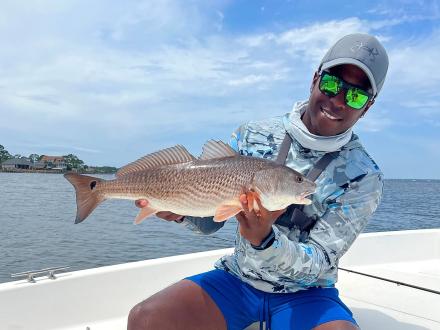
Live Bait Choice by Species
We have covered some best bait for inshore fishing by location and habitat, but what if it is a certain species that you're after? Next, we will list some of the better natural bait options to use for several popular species along Alabama's Beaches.
Redfish – live and dead shrimp, live and cut mullet, live croakers, and live bull minnows.
Pompano – sand fleas, ghost shrimp, and live and dead shrimp.
Speckled trout – live and dead shrimp, live baitfish like finger mullet and croakers.
Whiting – small pieces of cut shrimp, sand fleas, and ghost shrimp.
Flounder - live baits of bull minnows, finger mullet and croaker, live and dead shrimp, and squid strips.
Sheepshead – live fiddler crabs, live and dead shrimp, ghost shrimp, and sand fleas.
Gray snapper (mangrove snapper) – live and dead shrimp, live bull minnows, and small pieces of cut mullet.
Black drum – whole or cut blue crab, live and dead shrimp, and cut mullet.
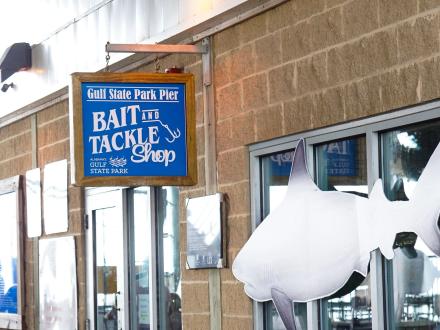
Where Do I Get Live Bait?
Some of the bait choices above are available at your local bait supply and tackle shops, while others take the extra effort to catch yourself. Dead baits are easier to obtain and can be carried in a small cooler, bucket, or even a bag. Purchasing live bait will generally require a bucket or livewell system of some kind to transport to and from the bait shop to the fishing location. Here is a list of bait types that are readily available at local bait shops:
Live baits – shrimp, bull minnows, fiddler crabs, and sand fleas.
Fresh dead or frozen baits – shrimp, squid, mullet, menhaden, sand fleas, and crab.
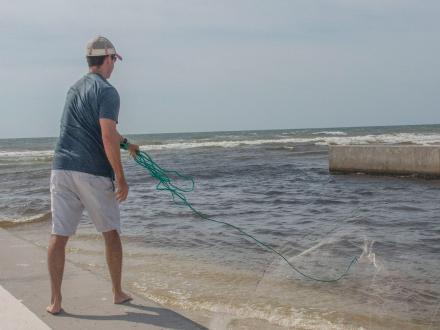
How Do I Catch My Own Bait?
Some bait choices are going to require extra effort to obtain. Luckily, there are many ways to catch your own bait, and your local tackle shop will have the following tools, nets, traps, and rigs to accomplish this:
Cast Nets: Cast nets are great for catching mullet, menhaden, croakers, sardines, shrimp, and many other bait types. Cast nets come in a wide variety of sizes, weights, and mesh diameters. Ask the staff in the local shop about sizes and weights to best suit your bait needs.
Sand Flea Rakes: Sand flea rakes are used for catching sand fleas, aka mole crabs, from the surf and waterline. Sand flea rakes are very easy to use and come in a few sizes.
Ghost Shrimp Pumps: Ghost shrimp pumps are cylindrical shaped, manual pumps that are used for catching ghost shrimp, arguably the best bait choice for surf fishing. The opening of the cylinder is placed over the opening of a ghost shrimp "hole" or "burrow" while a core of sand is extracted by the pump. The core is then pushed out and sifted, exposing the ghost shrimp. Ghost shrimp pumps can be made/purchased from PVC and stainless steel.
Sabiki Rigs: Sabiki rigs are multi-hook rigs that come in dozens of sizes and styles. They are used for catching baitfish of various types in all locations and scenarios. Choosing the right sabiki rig depends on what types of baitfish are desired. Before buying, ask the staff in the tackle store for the right size, style, and color.

Top Inshore Fishing Tackle
Hooks: For live bait fishing, a variety of hooks is important. Kahle hooks are commonly used for speckled trout and smaller redfish. Stronger, double-strength hooks are better for sheepshead. Include various egg sinkers, small black swivels to avoid line cutting by fish, and leader material like fluorocarbon or monofilament line.
Jigheads: It's advised to have jigheads of different sizes, like ¼-ounce, 3/8-ounce, and half-ounce, in various colors. The choice depends on the water depth and the need to get the bait to the bottom quickly.
Lures: During the early fishing season, inshore species like speckled trout and redfish are not very picky, making artificial lures effective in addition to live bait. Many anglers, including those who prefer "grub" fishing, find that plastic minnow-imitation bodies with lead jigheads are effective alternatives to live baits when looking for inshore saltwater fishing lures. These grubs, ranging from 2 ½ to 4 inches and in various colors and designs, mimic the baitfish that sportfish species prefer. Including shrimp-imitation soft plastics in various sizes and colors can also be an effective strategy. Lures like DOA shrimp, Vudu Shrimp, and Berkley Gulp shrimp imitations are recommended when lure fishing inshore. It's unpredictable which type the fish will prefer, so having a variety can be beneficial.
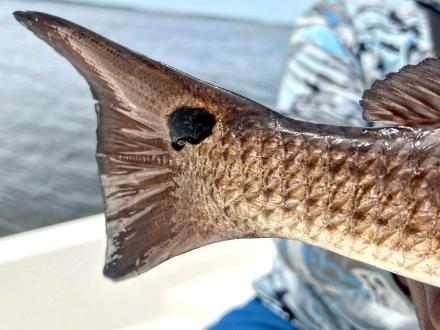
Bait Up & Go Fishing
Now that you've been able to narrow down the right bait choices for inshore fishing, it is just a matter of wetting a line! I hope this guide helped in narrowing down the proper bait choices and how to acquire them. For additional questions, contact your local bait and tackle shops for more info.
